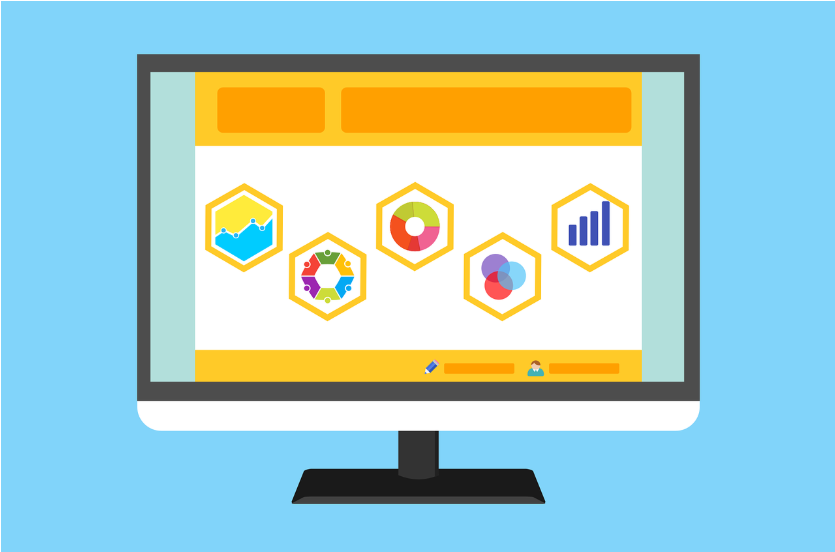Do you ever open a report, scroll for a few seconds, and think, “Where do I even start?”
You’re not alone — and we’ve all been there.
If you run a small or midsized business in Fayetteville, Lumberton, Wilmington, or anywhere in between, chances are your reports are packed with so much “important” data that your eyes glaze over before you even hit page two. Sales numbers buried under marketing stats, website analytics mixed with financials — it’s enough to make your morning coffee feel underpowered.
The truth is, we’re all swimming in information. Studies say the average person processes around 74 gigabytes of data every day — about the same as binge-watching 16 movies back-to-back. No wonder decision-making sometimes feels like trying to find your car keys in a tornado.
So how do you cut through the noise without tuning out the numbers?
At Future Data Systems, we believe the answer is simple: Visualize it.
The Challenge of Data Overload
Data overload happens when your business has more information than it can process or use efficiently — and that’s practically every small business today. From point-of-sale systems and CRMs to social media analytics, accounting software, and website dashboards, data is pouring in from every direction.
The results can be frustratingly familiar:
-
Decisions get delayed because there’s too much to sort through.
-
Patterns and trends go unnoticed until it’s too late.
-
Teams waste time creating separate reports from siloed systems.
And for many SMBs in North Carolina, tight budgets and lean teams mean you can’t always afford a full analytics department or enterprise BI software. But that doesn’t mean you can’t get clarity — you just need to see your data differently.
Data Visualization: The SMB Secret Weapon
Data visualization turns all those rows and columns into something your brain can process in seconds. Humans are built to recognize patterns, shapes, and colors long before we can interpret a spreadsheet full of numbers.
Think about it: when you see a line graph showing sales climbing steadily month after month, you instantly understand the trend. Try getting that same “aha!” moment from a 300-row Excel sheet.
At Future Data Systems, we help small businesses make sense of their data faster with visual dashboards that highlight what actually matters.
Why Visualization Works for Small Businesses
Speed matters. You don’t have time for a weeklong data retreat every time you need to make a decision. Visualization helps because:
-
Patterns jump out: You can instantly see seasonal swings, sudden drops, or standout events.
-
Decisions get faster: Focus on key metrics without drowning in irrelevant data.
-
Everyone’s on the same page: From your IT lead to your store manager, visuals tell a universal story.
-
You remember more: A well-designed chart sticks in your mind longer than a paragraph ever could.
Visualization isn’t just for executives — it’s for everyone from marketing assistants tracking engagement to operations teams monitoring inventory.
Best Practices for Clear, Impactful Visuals
You’ve probably sat through at least one meeting where the chart looked like modern art — lots of color, no meaning. Let’s not do that. Here’s how to keep visuals simple, clean, and useful:
1. Start With Your Audience
A CEO scanning quarterly KPIs doesn’t need the same level of detail as a marketing intern checking click rates. Build your visuals for the people using them.
2. Match the Chart to the Story
Bar charts for comparisons, line charts for trends, pie charts in moderation, and heatmaps for time-based insights. Pick visuals that make your point, not just fill the slide.
3. Keep It Clean
If it doesn’t add clarity, delete it. Skip extra gridlines, wild backgrounds, and five shades of blue just because your color palette says so.
4. Use Color With Purpose
One strong color highlighting your key point is more effective than a rainbow. Your goal is clarity, not decoration.
5. Make It Interactive When You Can
Dashboards with filters let users zoom in on what matters — like sales by location, week, or product — without needing a new report every time.
Budget-Friendly Tools for SMB Data Visualization
You don’t need big-business software to build powerful visuals. Try these affordable tools:
-
Google Looker Studio (formerly Data Studio): Free, web-based, and syncs with most platforms.
-
Zoho Analytics: Designed for SMBs with ready-made dashboards.
-
Excel Power Query / Power Pivot: Great for cleaning and automating data in tools you already use.
-
Infogram: Perfect for quick, polished reports and infographics.
-
Tableau Public: Great for storytelling with data (just note that it’s public-facing).
Combine these tools with automation — set up scheduled data imports or data-cleaning scripts to save hours each week.
From Data to Decisions
Here’s the truth: data overload isn’t going away. But it doesn’t have to control your business.
A smart visualization strategy turns a mountain of information into a snapshot of clarity. Imagine opening your Monday report and immediately spotting the three trends that matter most — that’s the power of visualization done right.
So if you’re tired of spreadsheets that feel like alphabet soup, let Future Data Systems help you bring your numbers to life. We’ll help you filter the noise, find your focus, and make your data finally speak your language.
📊 Ready to turn your data chaos into clarity?
Reach out to our team today — we’ll help you build visuals that actually help you see your business grow.

(Article adapted with permission from The Technology Press.)


You must be logged in to post a comment.